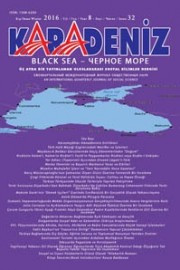Fakir Baykurt’un “Irazca’nın Dirliği” Romanının Yapısal Çözümlemesi
Structural Analysis of “Irazca’nin Dirliği” by Fakir Baykurt
Author(s): Okan ÖzkaraSubject(s): Semantics, Turkish Literature, Structuralism and Post-Structuralism, Theory of Literature
Published by: Kültür Ajans Tanıtım ve Organizasyon
Keywords: Structuralism; Novel Technique; Fakir Baykurt; Irazca’nın Dirliği (Irazca’s Peace); Perceptive Space;
Summary/Abstract: In terms of technical arrangement, each novel is made up of various constructive elements. Achievement of meaning in a novel depends greatly upon the arrangement and use of structure elements, when viewing the novel from a structural standpoint. The structure in the novel is achieved through the examination of identity of the novel, from the title to the content, point of view and the narrator, plot, time, setting and personalities, and the interrelation between meaning and structure is analyzed. In the analysis of setting (namely space) the meaning attached to space is taken into consideration and the setting is considered as narrowing, labyrinth or widening setting; and in the analysis of personea, the normative, decorative and stereotypical characters are detected so as to shed light on the main character. Irazca’nın Dirliği, in which the life matters of Anatolian people, who are in search of a peaceful lifestyle following the foundation of Turkish Republic, mainly focuses upon social inequality, which forms the main axis of Fakir Baykurt’s novels. Structural elements that are helpful in understanding the meaning entity of the novel are examined so as to throw light upon the life of the protagonist, Irazca.
Journal: Karadeniz Uluslararası Bilimsel Dergi
- Issue Year: 2016
- Issue No: 32
- Page Range: 275-292
- Page Count: 18
- Language: Turkish

